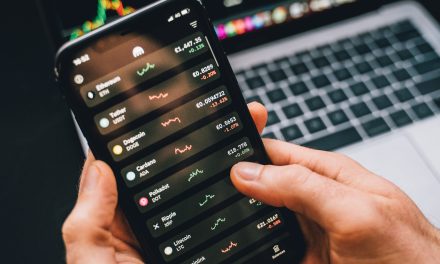Day Trading for a Living: Can It Be Profitable?
Day trading has become an increasingly popular way to generate income, but can it truly be a sustainable career? Many traders dream of day trading for a living, but the reality is that success requires discipline, strategy, and risk management. While some traders achieve consistent profits, others face significant losses due to market volatility and poor decision-making.
In this article, we’ll explore how day trading works, whether it can be profitable, and how beginners can start trading successfully. We’ll also cover the best strategies, common mistakes to avoid, and essential risk management techniques for those looking to make a full-time income from trading.
What Is Day Trading and How Does It Work?
Day trading is a short-term trading strategy where individuals buy and sell stocks, forex, cryptocurrencies, or commodities within the same trading day. The goal is to profit from small price fluctuations by making multiple trades throughout the day. Unlike long-term investors, day traders do not hold positions overnight, reducing exposure to after-hours market risks.
Understanding the Basics of Day Trading
To succeed in day trading for a living, traders must develop a solid understanding of the market. Here are the key components:
- Trading Platforms – Traders use online platforms like MetaTrader, ThinkorSwim, or Interactive Brokers to execute trades.
- Technical Analysis – Charts, indicators (e.g., Moving Averages, RSI), and candlestick patterns help predict price movements.
- Market Liquidity – High liquidity ensures traders can buy and sell assets quickly without major price disruptions.
- Leverage & Margin – Many traders use borrowed capital to amplify their trades, but this also increases risk.
- Risk Management – Setting stop-loss orders and managing trade sizes prevent excessive losses.
Successful traders combine these elements with a clear strategy to improve their chances of consistent profitability.
Can Day Trading Be Profitable? The Truth Behind the Hype
One of the most common questions aspiring traders ask is: Can day trading be profitable? The answer is yes, but it depends on several factors, including experience, strategy, risk management, and market conditions. While some traders make a steady income, many also struggle with losses due to the fast-paced nature of trading.
Factors That Affect Profitability in Day Trading
For those looking to achieve day trading for a living, these factors play a crucial role in profitability:
- Market Volatility – High volatility creates opportunities for profit but also increases risk. Successful traders analyze market trends to take advantage of price swings.
- Trading Strategy – A well-defined strategy, such as scalping, momentum trading, or breakout trading, is essential for long-term success. Random trades often lead to losses.
- Capital and Risk Management – Professional traders never risk more than a small percentage of their capital per trade. Using stop-loss orders and proper position sizing helps minimize losses.
- Emotional Discipline – Many traders fail due to fear, greed, and impulsive decisions. Sticking to a pre-defined plan and avoiding emotional trading is key.
- Experience and Learning – New traders often lose money due to lack of knowledge and experience. Continuous learning, practice, and using demo accounts help develop the necessary skills.
While day trading can be profitable, it requires patience, skill, and discipline. Beginners should focus on learning the fundamentals and practicing risk management before committing large sums of money.
Day Trading for Beginners: How to Get Started
For those interested in day trading for a living, getting started can seem overwhelming. However, with the right knowledge, tools, and strategies, beginners can build a solid foundation. The key is to learn, practice, and develop a structured trading plan before risking real money.
Essential Skills and Tools for New Traders
To succeed in day trading, beginners need to develop the following:
1. Technical and Fundamental Analysis
- Technical Analysis: Learning to read charts, indicators, and price patterns is essential for predicting short-term price movements.
- Fundamental Analysis: Staying informed about economic news, earnings reports, and global events helps traders understand market trends.
2. Choosing the Right Trading Platform
- Beginners should use a reliable, low-fee trading platform that offers real-time data, charting tools, and fast execution. Popular platforms include:
- MetaTrader 4/5 (forex & CFDs)
- ThinkorSwim (stocks & options)
- Interactive Brokers (global markets)
3. Risk and Money Management
- Never risk more than 1-2% of your trading capital per trade.
- Use stop-loss orders to minimize losses.
- Avoid overtrading—stick to high-probability setups.
4. Paper Trading (Demo Accounts)
- Before trading with real money, beginners should practice using demo accounts to develop confidence and test strategies.
Starting with the right mindset, strong risk management, and continuous learning is essential for long-term success in day trading.
Common Mistakes to Avoid in Day Trading
Many traders start with the goal of making day trading for a living a reality but struggle due to common mistakes. Understanding these pitfalls can help traders improve their strategy and avoid unnecessary losses.
How to Overcome the Challenges of Trading Daily
1. Overtrading
Placing too many trades in a single day often leads to high transaction costs and increased losses. Traders should focus on quality over quantity, choosing only high-probability setups.
2. Lack of a Clear Strategy
Many beginners enter trades without a plan, leading to impulsive decisions. A structured strategy—whether it’s scalping, momentum trading, or range trading—is essential for consistency.
3. Poor Risk Management
Failing to set stop-loss orders or risking too much capital on one trade can quickly lead to large losses. Experienced traders always define their risk before entering a trade and never invest more than they can afford to lose.
4. Emotional Trading
Fear and greed often drive poor decisions. Traders who let emotions dictate their trades may exit too early out of fear or hold onto losses too long hoping for recovery. Sticking to a predefined plan is key.
5. Ignoring Market Conditions
Markets do not always behave the same way. A strategy that works in a high-volatility market may not be effective in a low-volatility environment. Traders must adapt their approach based on market trends and conditions.
By recognizing and avoiding these mistakes, traders increase their chances of becoming profitable and sustainable in day trading.
Conclusion: Is Day Trading a Viable Career?
Day trading offers the potential for high profits, but it also comes with significant risks and challenges. While some traders achieve consistent success, many struggle due to market volatility, lack of discipline, and poor risk management.
For those considering day trading for a living, success requires:
- A solid understanding of the market and trading strategies.
- A disciplined approach to risk management.
- The ability to control emotions and avoid impulsive trades.
- Continuous learning and adaptation to changing market conditions.
While day trading can be profitable, it is not a guaranteed path to financial freedom. Beginners should start with a demo account, practice proven strategies, and never risk more than they can afford to lose. With the right skills and mindset, day trading can be a viable career, but it requires patience, persistence, and proper planning.
FAQs
Can day trading be profitable in the long run?
Yes, day trading can be profitable, but success depends on experience, strategy, risk management, and market conditions. Many traders fail due to emotional decision-making and lack of discipline. Those who develop a structured approach and manage risk effectively have a higher chance of long-term profitability.
How much money do you need to start day trading for a living?
The capital required depends on the market. For stocks, the Pattern Day Trader (PDT) rule in the U.S. requires a minimum of $25,000 in a margin account. Forex and cryptocurrency markets allow traders to start with smaller amounts, but having at least $5,000 to $10,000 is recommended for meaningful profits.
Is day trading for beginners a good idea?
Beginners should approach day trading with caution. It requires a strong understanding of market trends, technical analysis, and risk management. Starting with a demo account and learning from experienced traders can help beginners build confidence before trading with real money.
What are the best markets for day trading?
The most popular markets for day trading include:
- Stocks – High liquidity and volatility make stocks a preferred choice.
- Forex – The currency market operates 24/5, offering numerous trading opportunities.
- Cryptocurrency – High volatility in Bitcoin and altcoins creates potential for large price swings.
- Futures & Commodities – Traders speculate on assets like oil, gold, and agricultural products.
What is the biggest mistake new day traders make?
One of the biggest mistakes is overtrading and not following a risk management strategy. Many beginners also trade emotionally instead of sticking to a well-defined plan. Lack of preparation and unrealistic profit expectations often lead to losses.





